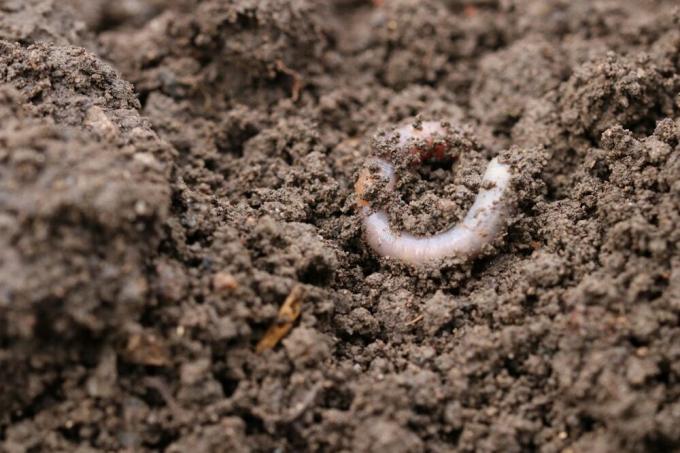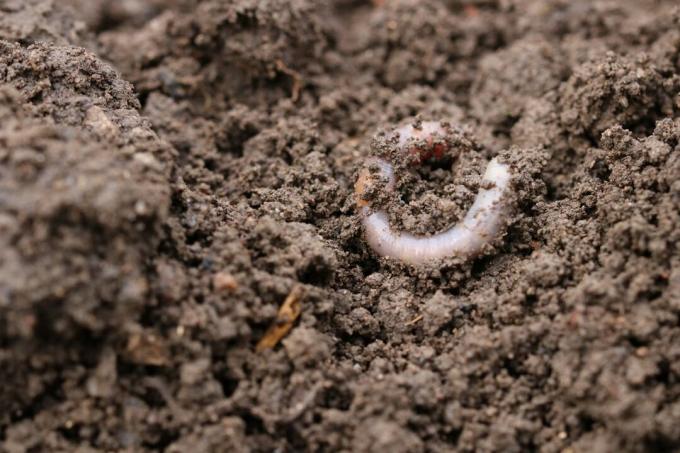

Table of contents
- Characteristics of pricking soil
- Non-essential substances for potting soil
- Mushrooms in pricking soil
- Use mycorrhizal fungi
- Homemade seed compost
- produce potting soil
So that the cultivation of young plants from seeds is successful, special cultivation soil is often used. It has different properties than ordinary soil and gives the young plants the best starting conditions.
Characteristics of pricking soil
- As germ-free as possible
- free from weed seeds or parts
- few nutrients
- good permeability
- finely crumbly
The small-grained soil structure makes it easier for the plants to spread their young and still fine roots in the substrate. The few nutrients force the plants to develop long and strong roots.
Sterility guarantees that no weeds form and bacteria and fungi don't stand a chance. Good potting soil does not mold.
Non-essential substances for potting soil
Peat, while still widely recommended, should no longer be used in the garden because of the degradation methods. Bogs are destroyed when peat is cut. In addition, while peat stores a lot of water, it can make the substrate very impermeable when it dries out. The same applies to any type of fiber, such as coconut fiber.
Fertilizers are not necessary as an addition, since there are enough nutrients in the compost. Too much fertilizer tends to damage the growth of the young plants. The fine roots could burn.
A notice:
To improve the mineral composition, you can mix in rock flour.
Mushrooms in pricking soil
Unlike mold, other types of fungi can actually help young plants grow. These include so-called mycorrhizal fungi. These are soil fungi that form a symbiosis with plants. They help plants absorb water or nutrients. Since the mycelium, even if not visible to the naked eye, can spread far better in the soil than the roots of plants, the plants benefit from this symbiosis, grow more vigorously and are less susceptible to pests or Diseases.

Use mycorrhizal fungi
The soil improver is available in different versions in the trade. These include powders for sprinkling or mixing with water or granules, which also improve the soil structure. Complete fertilizer with mycorrhiza fungi as an additive is not suitable. Mycorrhizal fungi can already be mixed into the seed soil. The mycelium later connects to the roots of the seedlings. It may take a while for a positive effect to set in.
A notice:
Never mix in the mushrooms before sterilizing. Like mold, they are killed off by excessive heat.
Homemade seed compost
composition
- ordinary garden soil, topsoil
- compost
- sand
If you prepare your substrate in spring, you can also use the soil from molehills, which usually has a very fine structure. The compost must be well deposited, rotted stable manure is not suitable because of its coarse structure and the many nutrients. Any type of sand that is not too fine can be used for young plant soil. It should loosen up the substrate and make it more permeable. To improve this effect, you can also mix in some perlite.
A notice:
Perlite consists of crushed and heat-treated volcanic rock with a very large, porous surface. It resembles styrofoam in appearance.
produce potting soil
- One third topsoil, one third compost and one third sand are used. Additives that you may want to use do not change the basic composition
- Sieve topsoil and compost as finely as possible. This removes roots, stones or pieces of wood.
- Mix the substrate vigorously in a bucket or larger tub.
- Sterilize the substrate so that the seed compost does not mold and so that all animal or plant pests are eliminated. The easiest way to do this is in the oven.
- Spread your seed soil on a deep baking tray, you may have to repeat the process several times if you want to produce a lot of substrate.
- Place the baking tray in the oven at 120 degrees for about 45 minutes. The decisive factor is less the level of temperature than how long the heat can act.
- You can also put the seed compost in the microwave if it is a small amount.
- Let the self-made pricking soil cool down and only then mix in any desired additives.
- After that you can use the substrate immediately.
 garden editorial
garden editorial I write about everything that interests me in my garden.
Learn more about floor care

Digging up the garden: 13 tips for lawns and beds
Whether it makes sense to dig up beds or lawns is discussed in different ways. Once you have decided on this measure, our tips will help you to organize work in the garden effectively.

Pine bark: suitable for which plants?
Pine bark is a type of mulch that is gaining popularity among many garden owners due to its color and properties. Before purchasing, the question often arises as to which plants the bark mulch is suitable for. This question is justified because of the origin of the pine.

Which soil to choose for elephant foot?
The right substrate is crucial for the elephant's foot and should therefore be chosen well. Read here which soil is best suited for the Beaucarnea recurvata!

Expanded clay as a water reservoir: The alternative to earth?
Expanded clay is known to many as a substrate for hydroponics or as drainage in pots. Due to its properties, the clay granulate is suitable as a substrate in many different areas and can replace soil. The granules have long been an indispensable basis for green roofs.

Potting soil: Mix the potting soil yourself
Potting soil has to meet special requirements. It can therefore often make sense to mix potting soil yourself. This comes with several advantages. But what do you have to pay attention to? The guide below shows how to do it.

pH value in the soil: 15 tips for measuring & regulating
If the pH of the garden/plant soil is suboptimal, this can lead to serious plant damage. We show what options there are for measuring and regulating.

